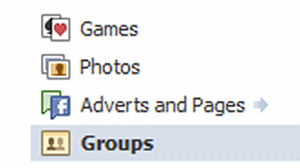Exit strategies from social media
While it's mostly acknowledged that every campaign has an end, we often fail to deal with – supposedly – trivial issues that surround the planned or unplanned termination of online-actions, petitions, informative websites, facebook/twitter accounts, etc.
Sometimes, ending a campaign might just mean saying "thank you" to your users and closing down the website/services you were running. But in fact it's often a crucial decision to throw away useful user data, content and branding that you built up in many hours of work. You might want to keep some of the information, or redirect links and users to longer lasting online resources.
All too often, it's hard to say what's the best thing to do, and as result, you leave things pretty much as they are. Your campaign's website becomes older, updated only every once in a while. Your campaign's facebook fan page is rarely used, even if it has far more fans than your organisation's fan page. You know that things should be different, there should be a transition. But what's the best way to do it?
During our session at the eCampaigning forum, we found that there's no general solution. But with a bit of planning, you can avoid some pitfalls.
Protect domains
Never cancel the registration of a domain you used unless the campaign is long ended and you've checked carefully that it is really not getting any significant traffic. If you've finished publishing, use a redirect instead. Otherwise you might lose interested visitors for your other websites, or find that someone else makes a fortune by taking over your old domain name that is still linked on other websites around the web.
Use the information you have
Use analytics software to find out if and how people arrive at your website. According to the results, you might change some of the links to your campaign's website, or ask other people to change them. Use redirects wisely, and point people to pages with the information they're looking for.
Don’t leave it too late
Persuading people to switch to other websites/accounts/pages is far easier if they’re still connected to you and your cause. The longer you wait with a transition after your campaign is over, the fewer people will switch, so plan ahead. Some participants of this workshop spoke of rates of people switching from 60% (1st month) to 1% (1st year).
Minimize external content
Is it really necessary to create yet another website? Can’t you campaign without one? What about another facebook or twitter account – are they important to your success? Very often, it’s a good idea to stick to your existing publishing places. This way, you won't have to deal with close-down or switching issues at all.
Push personal accounts
The web is social. Yeah, you heard this one A LOT. Yet, take the meaning of it seriously. Social = People are involved. By using personal accounts for campaigning you can 1) stress the fact that you have committed people in your campaign and 2) won’t end in a situation where people have to rely on a dedicated site to get information from. Make it viral from the start. Period.
Thank your volunteers and activists
Even if there's more to do, thanking your users for their actions is crucial to keep them on board. Maybe give them something extra: a game, a present, a prize or anything you can think of. They will pay you back with extra commitment.
Don’t rely on Facebook or other service providers

Web services are always changing and nobody can say what will happen next. Facebook for example introduced “pages” after people had already built up big “groups”. For a while there was a way to switch from group to page, but now this feature has been removed. If you still have a group with thousands of members and want it to become a page, you have a serious problem. Don’t rely too much on FB or other services to run your campaign. Having a good e-mail-list at hand is still the most sustainable solution.
Integrate
If you integrate external campaigning wisely into your website, a later transition will be easier. Buzz words are: Widgets, shared email-lists, shared backend, etc.
One of the results from our session at the ECF was the shared experience that exit strategies are often a matter of resources. Often we want to avoid the trouble of extra work, and with the pressure of launching and running a live campaign, it can be hard to find the time to think about what's going to happen at the end of it.
At the same time, many of us are working on the issue of “sustainability” but fail to make it part of our everyday lives. Having an exit strategy will definitely save you work time, money and motivation. So it’s the perfect first step to start living what’s called “sustainability”.
Michael Dettbarn is eCampaigner for Oxfam Germany.
